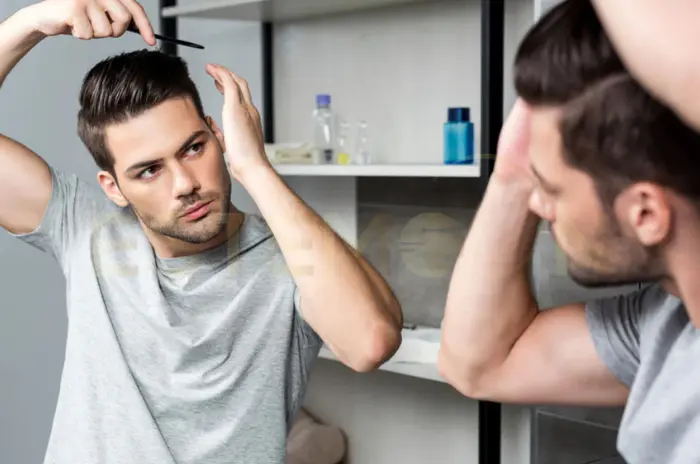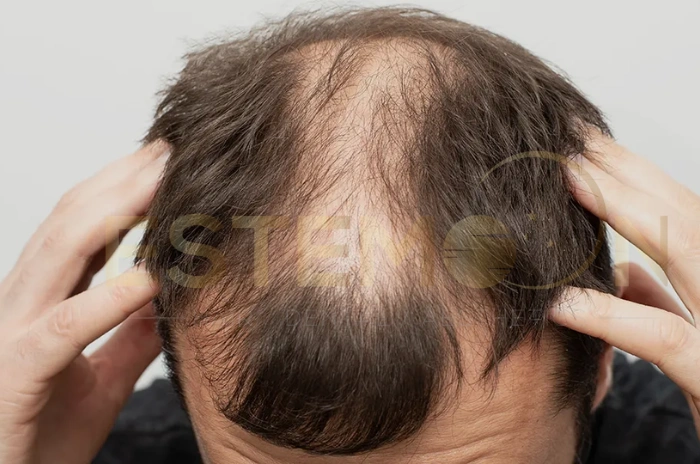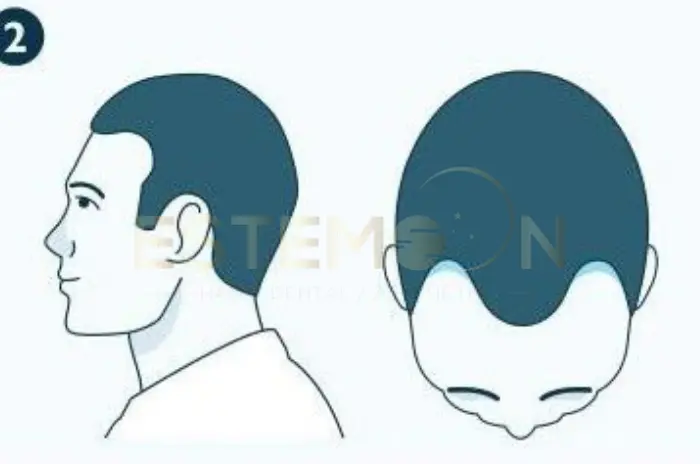Minoxidil beard growth has become increasingly popular among men seeking to enhance their facial hair. Originally developed as a blood pressure medication, minoxidil’s hair growth properties were discovered as a side effect, leading to its FDA approval for scalp hair loss treatment. Today, many men use topical minoxidil off-label for beard enhancement, despite limited clinical research specifically focused on facial hair applications.
The growing interest in facial hair enhancement reflects changing grooming trends and personal aesthetics. While minoxidil shows promise for beard growth, understanding its mechanisms, proper application, and potential risks is crucial for anyone considering this treatment approach.
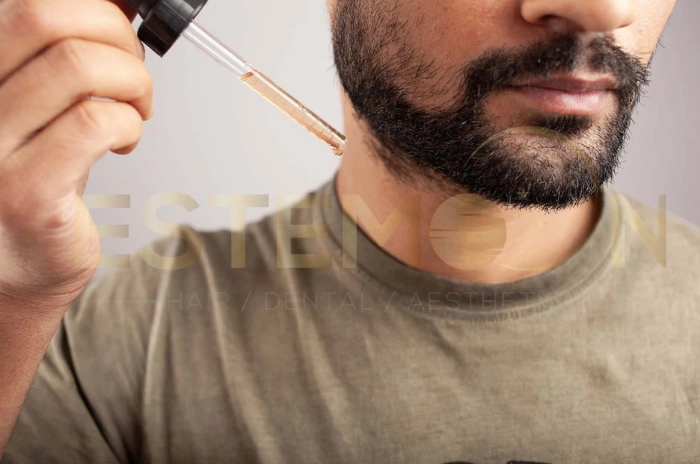
Understanding Minoxidil and Its Use in Beard Enhancement
Minoxidil belongs to a class of medications called vasodilators, originally designed to treat high blood pressure. When applied topically, it promotes hair growth through multiple mechanisms that affect hair follicle function and blood circulation.
The medication comes in two primary forms for topical application: minoxidil liquid solution (typically 2% or 5% concentration) and minoxidil foam (usually 5% concentration). Both formulations contain the active ingredient minoxidil, but differ in their carrier systems and application methods.
Off-label minoxidil use for beard growth has gained traction based on its proven effectiveness for scalp hair loss. The same biological mechanisms that stimulate scalp hair growth theoretically apply to facial hair follicles, though individual responses may vary significantly.
Clinical studies on minoxidil for scalp hair loss demonstrate consistent results, with approximately 60-70% of users experiencing some degree of hair regrowth. However, specific research on beard growth treatment remains limited, making it important to understand both the potential benefits and limitations.
Minoxidil Formulations and Concentrations
| Formulation Type | Concentration | Application Method | Typical Usage |
|---|---|---|---|
| Liquid Solution | 2% | Dropper application | Twice daily |
| Liquid Solution | 5% | Dropper application | Once or twice daily |
| Foam | 5% | Pump dispenser | Once or twice daily |
The choice between liquid and foam often depends on personal preference, skin sensitivity, and lifestyle factors. Foam formulations typically cause less skin irritation and dry faster than liquid solutions.
How Minoxidil Stimulates Beard Growth
Minoxidil effectiveness in promoting hair growth involves several complex biological processes that work together to enhance hair follicle function and hair shaft production.
The primary mechanism involves vasodilation, where minoxidil opens potassium channels in smooth muscle cells surrounding blood vessels. This action increases blood flow to hair follicles, delivering more nutrients and oxygen necessary for healthy hair growth.
Minoxidil sulfate, the active metabolite of minoxidil, plays a crucial role in the hair growth process. The conversion occurs through the sulfotransferase enzyme, which is present in varying concentrations throughout different body areas, including facial hair regions.
The medication extends the anagen (growth) phase of the hair cycle while shortening the telogen (resting) phase. This shift allows hair follicles to remain active for longer periods, producing thicker, longer hair strands over time.
The Hair Growth Cycle and Minoxidil
Understanding how minoxidil affects the natural hair growth cycle helps explain its effectiveness:
- Anagen Phase: Active growth period lasting 2-6 years for scalp hair, potentially shorter for facial hair
- Catagen Phase: Transitional period lasting 2-3 weeks where growth slows
- Telogen Phase: Resting period lasting 2-3 months before hair sheds
- Minoxidil Impact: Prolongs anagen phase and accelerates transition from telogen to anagen
The hypertrichosis effect, or excessive hair growth, represents minoxidil’s most visible benefit. This occurs when dormant or miniaturized hair follicles become reactivated and begin producing terminal (thick, pigmented) hairs instead of vellus (fine, colorless) hairs.
Applying Minoxidil for Optimal Beard Growth
Proper minoxidil application technique significantly influences treatment outcomes and minimizes potential side effects. Following established protocols ensures maximum absorption while reducing skin irritation risks.
Begin with clean, dry facial skin to optimize minoxidil absorption. Wash the target area with a gentle cleanser and pat dry completely before application. Moisture or oils can interfere with proper penetration and reduce effectiveness.
For liquid formulations, use the provided dropper to apply 1ml (approximately 20 drops) to the desired beard area. Spread evenly using clean fingertips, avoiding the eye area and mucous membranes. Allow 4-6 hours before washing the treated area.
Minoxidil foam application involves dispensing a small amount (about half a capful) onto clean hands, then spreading evenly across the target area. Foam formulations typically absorb faster and leave less residue than liquid solutions.
Application Schedule and Timing
Most dermatologists recommend twice-daily applications, typically morning and evening, for optimal results. However, some individuals may start with once-daily applications to assess skin tolerance before increasing frequency.
Key application guidelines include:
- Apply to completely dry skin for maximum absorption
- Avoid washing treated areas for at least 4 hours post-application
- Use consistent timing to maintain steady medication levels
- Continue applications even when initial results appear
Monitor skin reactions carefully during the first few weeks. Mild irritation, redness, or dryness commonly occurs as skin adjusts to the medication. Severe reactions warrant immediate discontinuation and medical consultation.
Safety and Side Effects of Minoxidil for Beards
Minoxidil side effects range from mild local reactions to potentially serious systemic effects, though severe complications remain relatively rare with proper topical use.
Common local side effects include skin irritation, redness, itching, and dryness at application sites. These reactions typically occur during the initial weeks of treatment and often diminish as skin tolerance develops.
Contact dermatitis represents the most frequent adverse reaction, particularly with liquid formulations containing propylene glycol. Switching to foam formulations or lower concentrations often resolves this issue while maintaining treatment benefits.
Systemic absorption of topical minoxidil can occur, potentially causing cardiovascular effects in sensitive individuals. Symptoms may include rapid heartbeat, chest pain, dizziness, or swelling in hands and feet. These effects require immediate medical attention.
Risk Factors and Contraindications
Certain individuals face higher risks when using minoxidil for beard enhancement:
- Heart disease or cardiovascular conditions
- Low blood pressure or current antihypertensive medication use
- Skin conditions affecting the face (eczema, psoriasis, dermatitis)
- Age under 18 or over 65 years
- Pregnancy or breastfeeding (though unlikely for male beard growth)
Pre-existing skin conditions on the face may worsen with minoxidil use. Consultation with a dermatologist helps determine treatment appropriateness and identify potential complications before they develop.
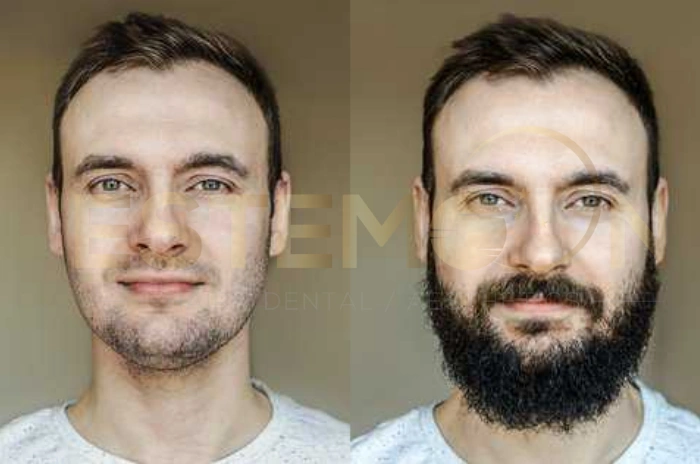
Tips for Successful Beard Growth with Minoxidil
Maximizing minoxidil effectiveness requires consistent application combined with supportive lifestyle practices that promote overall hair health and follicle function.
Maintain a consistent application schedule without skipping doses, as irregular use significantly reduces treatment effectiveness. Set daily reminders or integrate applications into existing grooming routines to ensure consistency.
Proper nutrition supports hair growth from within. Focus on protein-rich foods, vitamins B7 (biotin), D, and minerals like zinc and iron. Consider supplements if dietary intake appears insufficient, though food sources generally provide better absorption.
Gentle skin care prevents irritation that could interfere with minoxidil absorption. Use mild, fragrance-free cleansers and avoid harsh scrubbing or exfoliation on treated areas. Moisturizing between applications helps maintain skin barrier function.
Lifestyle Factors Supporting Beard Growth
- Adequate Sleep: 7-9 hours nightly supports optimal hormone production
- Stress Management: Chronic stress can inhibit hair growth through hormonal disruption
- Regular Exercise: Improves circulation and overall health
- Avoid Smoking: Nicotine restricts blood flow to hair follicles
- Stay Hydrated: Proper hydration supports cellular function and nutrient delivery
Patience remains crucial, as visible results typically require 3-6 months of consistent use. Premature discontinuation often occurs when users expect immediate results, undermining potential benefits.
Timeline and Expectations for Beard Growth with Minoxidil
Understanding realistic timelines for beard growth treatment helps maintain motivation and prevents premature discontinuation when immediate results don’t appear.
Initial changes may become noticeable after 6-8 weeks of consistent use, typically beginning with increased vellus hair density in treated areas. These fine hairs gradually thicken and darken over subsequent months.
Significant improvements in beard density and coverage usually emerge between 3-6 months of regular application. Peak results often occur around 12-18 months, though individual variation remains substantial.
The transformation process follows predictable stages:
Month-by-Month Progression
Months 1-2: Minimal visible changes, possible mild skin irritation as tolerance develops. Focus on establishing consistent application routine.
Months 3-4: Initial vellus hair appearance in previously bare areas. Existing hair may appear slightly thicker or darker.
Months 5-8: Noticeable density improvements with vellus hairs transitioning to terminal hairs. Patchy areas begin filling in gradually.
Months 9-12: Continued thickening and coverage expansion. Most users achieve their maximum response during this period.
Beyond 12 months: Maintenance of achieved results requires continued application. Discontinuation typically leads to gradual reversal over 3-6 months.
Individual response varies significantly based on genetics, age, baseline hair density, and consistency of use. Some men achieve dramatic results while others experience modest improvements.
Combining Minoxidil with Other Treatments
Minoxidil and tretinoin combination therapy has shown enhanced effectiveness in some scalp hair loss studies, though specific research on beard applications remains limited.
Tretinoin, a topical retinoid, may increase minoxidil absorption and enhance its effectiveness through improved skin penetration. However, this combination also increases skin irritation risks, requiring careful monitoring and gradual introduction.
Microneedling for beard growth represents another complementary approach that may enhance minoxidil effectiveness. This technique involves creating tiny wounds in the skin using fine needles, potentially improving medication absorption and stimulating natural hair growth factors.
Dermarolling Protocol for Beard Enhancement
When combining microneedling with minoxidil:
- Use 0.5-1.0mm needle length for facial applications
- Perform treatments 1-2 times weekly
- Allow 24 hours between microneedling and minoxidil application
- Maintain strict sanitation to prevent infections
- Start with shorter needles to assess skin tolerance
Other supportive treatments include:
- Biotin supplements: May support hair structure and growth
- Beard oils: Moisturize skin and existing hair without interfering with minoxidil
- Gentle massage: Improves circulation during application
- Consistent grooming: Maintains health of existing hair while new growth develops
Professional consultation helps determine appropriate combination therapies while minimizing risks and maximizing potential benefits.
FAQs About Minoxidil for Beard Growth Safety and Effectiveness
How long does it take for minoxidil to work?
Visible results typically appear after 3-6 months of consistent daily use, with peak effectiveness reached around 12-18 months.
Can you apply minoxidil to your beard safely?
Yes, topical minoxidil can be safely applied to beard areas when used as directed, though it’s an off-label use requiring careful monitoring for side effects.
What are the side effects of minoxidil?
Common side effects include skin irritation, redness, itching, and dryness, while rare systemic effects may include rapid heartbeat or dizziness.
Does minoxidil make beards thicker and fuller?
Minoxidil can increase beard thickness and density by converting vellus hairs to terminal hairs and reactivating dormant follicles in most users.
Follow us on social media for updates, tips, and patient success stories:


